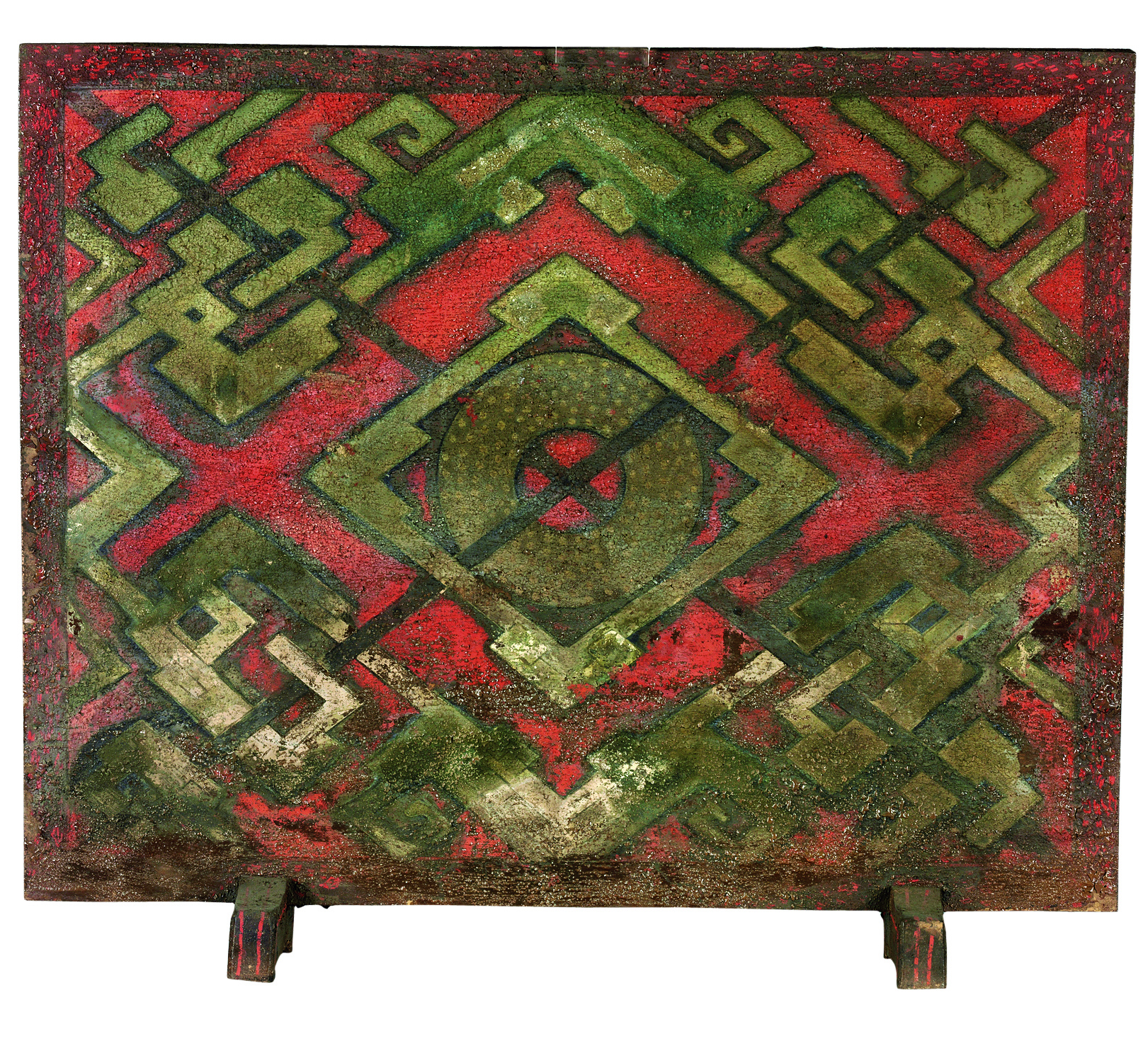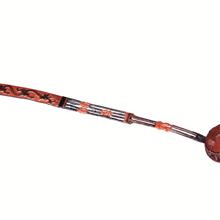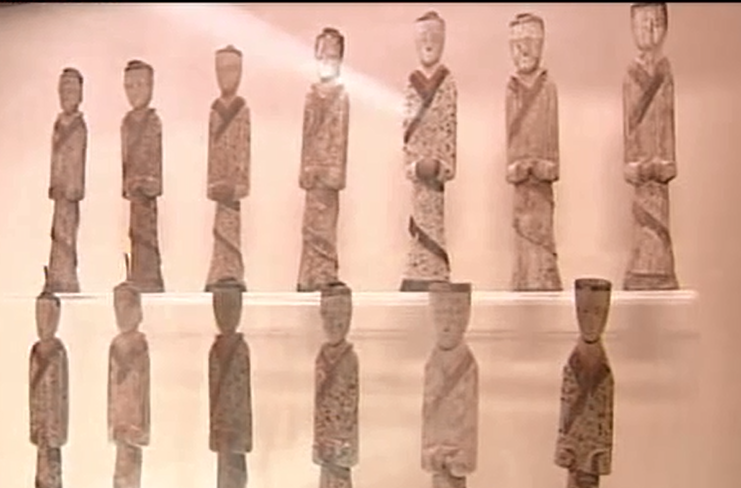Dimensions: Overall height:62cm; length: 72cm; width: 58cm
Origin: Unearthed from Han Tomb No.1 at Mawangdui, Changsha in 1972
The lacquer screen unearthed from Tomb No.1 is of hewn wooden basis, with two wooden stands holding it. On the front side of the screen is painted, on the background of vermillion lacquer, a huge dragon flying through clouds. The dragon has two long ears on its head, a green body and scales painted with vermillion lacquer. The rims are painted with vermillion lozenge designs. The back side of the screen is painted, on the background of vermillion lacquer, with colored geometric patterns done with light green tung oil colors. And in the center is painted a grain-patterned bi (round flat piece of jade with a hole in the center). According to the Inventory of Burial Objects, the original screen was 1.2 meters long and less than one meter tall. This screen therefore is a specially made funerary object.
The screen has a very long history in China. Its use had already been recorded in the early Western Zhou Dynasty, but the word “screen” did not exist at the time and it was called “di”. The Rites of Zhou records “setting up a royal di”. Royal di was the screen made for the use of Son of Heaven in the Zhou Dynasty. It was made of a wooden frame on which was pasted deep red silk. On the silk was painted a tomahawk design, with colors appearing near the blade of the tomahawk while the rest of the screen is painted black. This was the symbol of the title and power of the Son of Heaven. Official History of Han Dynasty: Biography of Chen Wannian records that in Western Han Dynasty, Chen Wannian, the imperial counselor good at currying favor, was sick in bed and scolded his son Chen Xian until midnight when “Xian fell asleep by knocking his head against the screen”. The screen was originally used for shielding wind and hiding oneself, but with its ever wider use its functions also increased. By the Spring and Autumn Period and the Warring States Period, screen had been widely used already and there had appeared exquisite screens on stands. By the Han Dynasty, it was used even more widely. Lacquer screen became a high-taste piece of furniture and only the wealthy families were able to possess them. The appearance of lacquer utensils represented one aspect of social progress. On Salt and Iron by Huan Kuan of the Western Han Dynasty records:“One cooking utensil needs the manpower of one hundred persons; one screen requires that of ten thousand persons.” This shows that it took a great amount of manpower to produce one lacquer screen. Such emphasis on the preciousness of lacquer utensils also reveals the luxurious life in the home of the Marquis of Dai. There is also the following record in Various Records of the Western Capital: “When Emperor Wendi was crown prince, he built the Garden of Seeking Talented People to recruit his followers. In the garden there were six grand halls, with magnificent guest houses and exotic screens and curtains.” There were even more kinds of screens in the Western Han royal court. There were exquisite and fantastic mica screens, glass screens, jade and tortoise shell screens, etc.








